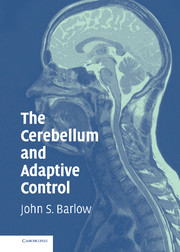Book contents
- Frontmatter
- Contents
- Preface
- Acknowledgments
- PART ONE ANATOMY AND PHYSIOLOGY OF THE CEREBELLAR SYSTEM
- 1 Introduction
- 2 Comparative Anatomy of the Cerebellum
- 3 Anatomy and Physiology of the Cerebellar Cortex
- 4 The Mossy Fiber Afferent System
- 5 The Inferior Olivary System and the Climbing Fibers
- 6 The Cerebellar Nuclei and Their Efferent Pathways: Voluntary Motor Learning
- PART TWO CEREBELLAR FUNCTIONS
- PART THREE MODELS AND THEORIES
- PART FOUR SUMMARY AND CONCLUSIONS
- APPENDIX A A Hybrid Analogue/Digital Multiplexer/Multiplier-Based Adaptive Signal Processor
- Author's Note
- Bibliography
- Index
4 - The Mossy Fiber Afferent System
Published online by Cambridge University Press: 28 October 2009
- Frontmatter
- Contents
- Preface
- Acknowledgments
- PART ONE ANATOMY AND PHYSIOLOGY OF THE CEREBELLAR SYSTEM
- 1 Introduction
- 2 Comparative Anatomy of the Cerebellum
- 3 Anatomy and Physiology of the Cerebellar Cortex
- 4 The Mossy Fiber Afferent System
- 5 The Inferior Olivary System and the Climbing Fibers
- 6 The Cerebellar Nuclei and Their Efferent Pathways: Voluntary Motor Learning
- PART TWO CEREBELLAR FUNCTIONS
- PART THREE MODELS AND THEORIES
- PART FOUR SUMMARY AND CONCLUSIONS
- APPENDIX A A Hybrid Analogue/Digital Multiplexer/Multiplier-Based Adaptive Signal Processor
- Author's Note
- Bibliography
- Index
Summary
In this chapter and in Chapter 5, a brief overview is presented of the principal origins of, respectively, the mossy fibers and the afferent fibers to the inferior olive. The information below is distilled mainly from Brodal (1981); Bloedel and Courville (1981); Ekerot, Larson, and Oscarsson (1979); and Brodal (1998).
The termination sites of the climbing fibers from the inferior olive and the mossy fibers in the cerebellar cortex are, with few exceptions, quite different. Although both types of excitatory fibers are ultimately derived from a variety of sources, the climbing fibers, so far as is known, take their immediate origin entirely from the inferior olivary nucleus (the inferior olive), whereas the mossy fibers do not similarly pass through a single nuclear structure.
The mossy fibers conduct impulses relatively rapidly, branch extensively, and influence many Purkinje cells via the granule cells. However, the excitatory effect on each Purkinje cell is weak so the conjunctive action of many mossy fibers is required to fire the Purkinje cells at rates of 50–500 per second.
Vestibulocerebellar Afferents
The vestibulocerebellar afferents terminate in the flocculus and nodulus, the ventral part of the uvula, and the paraflocculus, and provide inputs to the cerebellum that are undoubtedly important for automatic regulation of posture and movement of the head, trunk, and limbs (Fig. 3.1).
Primary Vestibular Fibers. The primary vestibular fibers are fibers from the vestibular end-organs (semicircular canals and otolith organs), which have been traced to the vestibulocerebellum and the fastigial nucleus.
- Type
- Chapter
- Information
- The Cerebellum and Adaptive Control , pp. 37 - 41Publisher: Cambridge University PressPrint publication year: 2002



